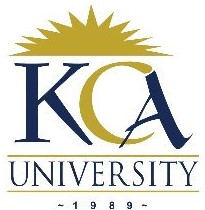 UNIVERSITY EXAMINATIONS: 2017/2018
UNIVERSITY EXAMINATIONS: 2017/2018
EXAMINATION FOR THE DEGREES OF BACHELOR OF SCIENCE IN
INFORMATION TECHNOLOGY/ APPLIED COMPUTING
BIT2301A BAC3206 COMPUTER GRAPHICS
FULLTIME/ PART TIME/ DISTANCE LEARNING
ORDINARY EXAMINATIONS
DATE: APRIL, 2018 TIME: 2 HOURS
INSTRUCTIONS: Answer Question One & ANY OTHER TWO questions.
QUESTION ONE [30 MARKS]
a) Discuss THREE basic elements of computer graphics that contribute towards realistic
representations of real-World images (6 Marks)
b) Describe the following terms as they relate to computer graphics: (6 Marks)
i) Shading
ii) Aliasing
iii) Rotation
c) Explain the concept of “transformation” and describe any FOUR types. (9 Marks)
d) Apply Bresenham’s line drawing algorithm to discover the intermediate points that can be
drawn between the following sets of points, then draw the resulting lines:
i) (2,2) and (7,4) (3 Marks)
ii) (0,0) and (-8, -4) (3 Marks)
iii) (3,1) and (6,8) (3 Marks)
QUESTION TWO [20 MARKS]
a) Identify and briefly explain TWO common types of window-to-viewport
transformation (4 Marks)
b) Consider the lines with end vertices AB, CD, EF and GH below and use these to answer the
questions that follow.
i) Explain how the binary codes are assigned for the regions above (3 Marks)
ii) Clearly explain the process of clipping the four lines above using the CohenSutherland algorithm (8 Marks)
c) List the advantages and disadvantages of the z-buffer method of graphics display (5 Marks)
QUESTION THREE [20 MARKS]
a) Explain the following light sources and give a situation when they are most useful:
i) Spotlight (3 Marks)
ii) Point light (3 Marks)
iii) Directional light (3 Marks)
b) A common algorithm for visible surface identification is through “Area Subdivision”
i) Explain how this algorithm works (3 Marks)
ii) There are FOUR possible relationships that a surface can have with a specified area
boundary. Describe each of these relationships and illustrate them graphically (8 Marks)
QUESTION FOUR [20 MARKS]
a) Identify FOUR aspects that a typical illumination model will consider (4 Marks)
b) The basic illumination model used is the Phong model which breaks local illumination into
3 components:
i) Ambient reflection
ii) Diffuse reflection
iii) Specular reflection
Explain each of these reflections (9 Marks)
c) Displaying 3D objects on a 2D screen introduces the “hidden surface” problem
i) Clearly describe this problem (2 Marks)
ii) Highlight the TWO main approaches for removing the problem (2 Marks)
d) Identify THREE approaches to text clipping (3 Marks)
QUESTION FIVE [20 MARKS]
a) From the concept of the Cathode ray tube, we can display an object on the screen in TWO
ways. Explain the two approaches and illustrate graphically (8 Marks)
b) Describe the following shading models. Also cite a benefit and limitation of each (12 Marks)
i) Flat shading
ii) Goraud shading
iii) Phong shading
